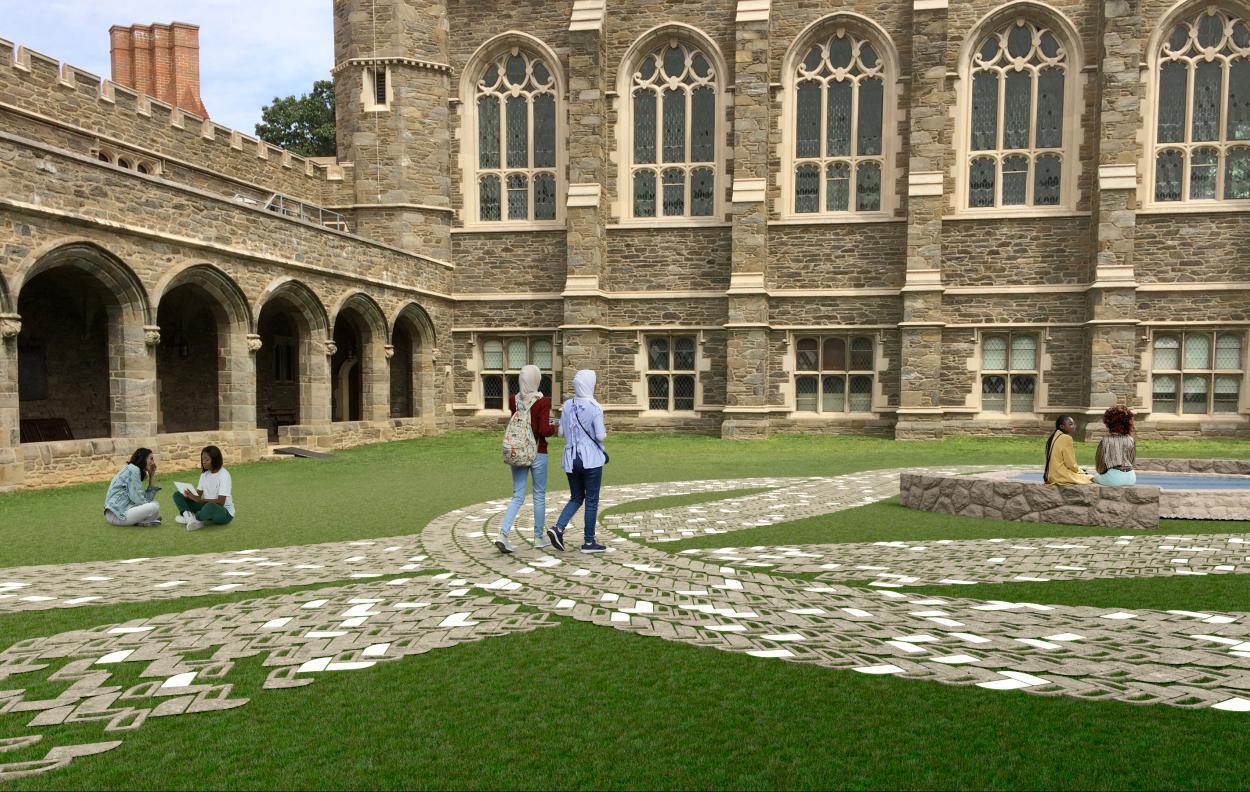On Thursday, September 28th, Bryn Mawr College launched the public art installation Don’t Forget to Remember (Me), by artist Nekisha Durrett.
Bryn Mawr outlined on its website that the goal of the project was to “create a monument addressing a legacy of exclusionary practices at the College.” The project, which will be in the cloisters, will take a year to complete. It will be the first public art installation on Bryn Mawr College’s campus in its history.
After an announcement of the ARCH (Art Remediating College Histories) Project in the Fall of 2022, Bryn Mawr College opened up for artists to submit different proposals for the project. Over a hundred applications were sent in, and five final projects were chosen. In the Spring of 2023, Durrett’s art was ultimately picked out of those five.
Nekisha Durrett is a Washington DC-based artist whose own work specializes in remembering and telling the stories which have been lost to history. She has previously done many other art installations around the United States. Her work can be found in Arlington, Baltimore, and New York, among other places. On Durrett’s website, it states that “[Her] work contemplates biases and the unreliability of memory, as information is filtered over time. Durrett illuminates individual and collective histories of Black life and imagination, addressing her own younger self and the stories she wished she had learned.”
Durrett’s art will be made up of terracotta pavers which will be placed in the shape of a knot. She will engrave some of these stones with the names of Black and Indigenous peoples who worked for the college in the late 19th century to mid-20th century. The intention of this is to give acknowledgment and show gratitude for the hard work that went unrecognized for decades at Bryn Mawr.
The project will act as a continuation of the research initially done by students from the Black at Bryn Mawr College group, a student-run organization that began in 2014 under the leadership of Grace Pusey (’15) and Emma Kioko (’15).
Durrett spoke with the BiCo Newspaper the day of the launch, during which she and three others were interviewed about the art installation, among them President Kim Cassidy.
When asked about how her experience at Bryn Mawr had been thus far, Durrett told the paper “This experience has been pretty altering for my practice. I think it’s actually deepened my need and appreciation for deep research and also an appreciation for the young scholars who brought this information to light.”
Durrett told the paper “I myself have been a Black student at a predominately white campus and I know what that’s like, I remember being at an all-white college and having someone produce a Black Book; it was a book that was actually called the Black Book, where they went back and looked at the history of the college to bring forward the names of Black Students who were in attendance. And just how powerful it was for me to understand the legacies of Black people at the institution. And so, this opportunity gave me a chance to engage with this history and to amplify that history for the community here and beyond.”
When asked about the impact she hoped the project would have on current and future students of Bryn Mawr College, Durrett stated “my goal is to reclaim the cloister space for Black and Brown students at Bryn Mawr. I want to make this a space that they enter and see themselves in… I would like for this to be something that does spur healing, because I believe that once you reveal whole histories, once you hold the good with bad, put the complicated to the light, it actually has an opportunity to bring us closer.”

